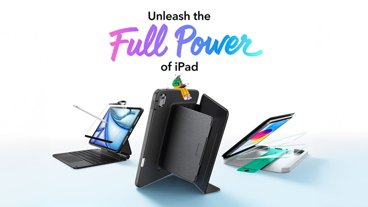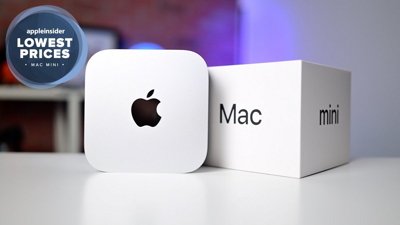Chip designer Arm Ltd. has announced its new v9 architecture, a design that could eventually appear in the Apple Silicon powering future iPhones, iPads, and Macs.
The new Arm v9 focuses on three areas: performance, security, and machine learning (ML) capabilities. Arm says the design will provide more than a 30% CPU performance boost over the next two generations of mobile and infrastructure CPUs.
AI is another critical area Arm targeted with its v9 design. The architecture's new Scalable Vector Extension 2 (SVE2) technology will enhance ML and digital signal processing (DSP) for future devices.
Arm's SCE2 can improve processing for 5G systems, ML, voice AI assistants, and virtual and augmented reality. Apple's Arm-based chips include a Neural Engine that handles ML tasks, and the company is reportedly developing a mixed-reality headset and AR glasses.
Security is the third pillar of Arm's new design. Its Confidential Compute Architecture (CCA) "shields portions of code and data from access or modification while in-use, even from privileged software, by performing computation in a hardware-based secure environment."
The CCA will use a concept called Realms, a "region that is separate from both the secure and non-secure worlds." For example, Arm says a business application could use Realms to protect sensitive data from the rest of the system "while it is in-use, at rest, and in transit."
ARM says that the first devices using the v9 design will arrive by late 2021.
Chips based on the decade-old v8 design offer the best performance-per-watt in computing today. Arm-based chips power nearly every smartphone, along with many tablets and an increasing number of laptops.
Apple Silicon, which uses an Arm v8-based design, will soon power every Apple computing product. All iPhones and iPads use Apple Silicon chips, and the company is in a two-year transition that will end with all Macs running Apple's Arm-based silicon. The Arm-based M1 chip powers the latest MacBook Air, MacBook Pro, and Mac mini.
Nvidia is in the process of buying Arm Ltd. for a record-breaking $40 billion.
 Will Shanklin
Will Shanklin








-m.jpg)






 Marko Zivkovic
Marko Zivkovic
 Malcolm Owen
Malcolm Owen
 Andrew O'Hara
Andrew O'Hara
 Christine McKee
Christine McKee

 Amber Neely
Amber Neely
 Andrew Orr
Andrew Orr
 William Gallagher
William Gallagher








74 Comments
Is Apple required to push their Apple developed ARM designs back to the main ARM design architecture? It appears v9 will include many of the ideas Apple has developed.
Wait what? I thought Apple was an ARM Holdings co-founder, had a permanent architectural license and their own custom design for PCs that was radically different from - and better than - the small core design for embedded systems that the ARM pushes for Cortex-A for smartphones and the somewhat better (but still not very good) Marvell and N1 core designs that are used on servers (which again aren't very good as they constitute 3% of the market, forcing Amazon, Microsoft, Google etc. to also make their own core designs and causing Marvell, HP and most other ARM server vendors to drop out of the market leaving Ampere as the only player)? Even Fujitsu, who makes ARM supercomputers, relies on a custom design (a combination of the RISC license based on SPARC that they bought from Sun back in the day and things they licensed from ARM).
While the M1 chip has a single core score that rivals Intel Core i7 and i9, the best Cortex Core for PCs and mobile barely surpasses the Intel Pentium. (Qualcomm is hyping up the multicore score, but even there it takes 8 performance cores to merely rival the Geekbench 5 score for the quad core Intel i5). I thought that Apple having their own big core design that ARM Holdings can't come close to was why Nvidia's purchase of ARM Holdings is like "meh" for Apple as their custom CPU and GPU designs are much better - by several times - than Cortex, Mali (the ARM Holdings GPU) and even Nvidia (either their old GPU architecture or their new Ampere one) anyway.